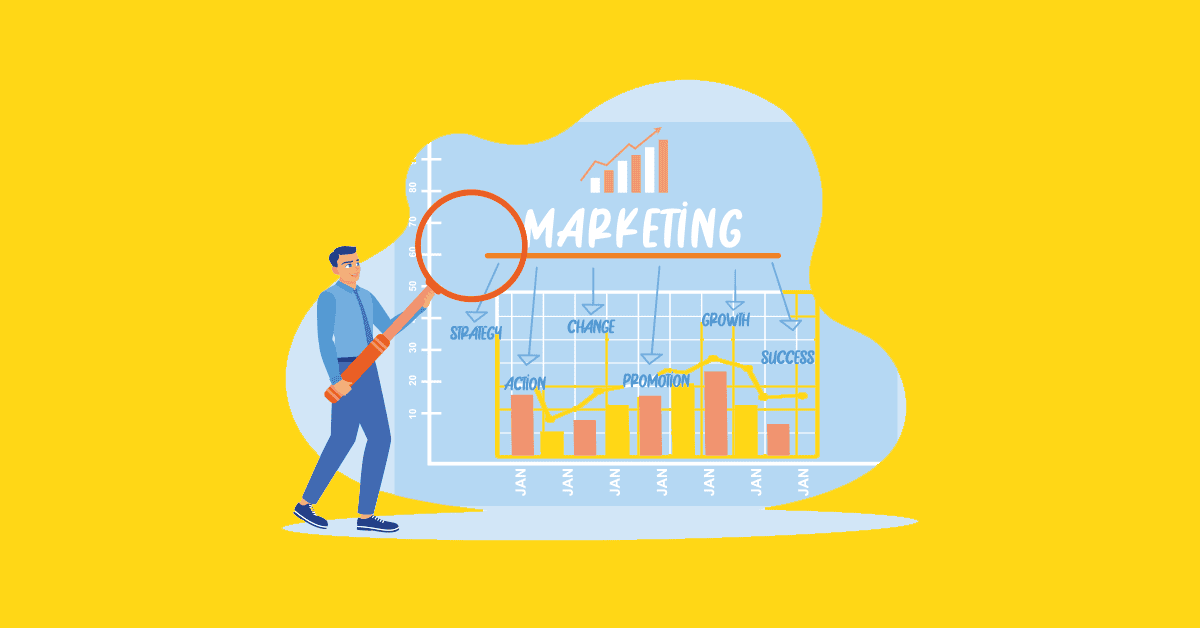Balancing Human Creativity and AI Insights in Marketing Campaigns
In the quest to blend human creativity with AI-generated insights for impactful marketing campaigns, we’ve gathered insights from Directors of Content Marketing and digital marketing, among others. From fostering creative synergy sessions to leading conversations and scaling with AI, explore the diverse strategies of fifteen marketing professionals as they share their best practices.

We’ve mastered the art of harmonizing human creativity with AI-generated insights to craft compelling campaigns that deeply resonate with our target audience. One key best practice we swear by is our “Creative Synergy Sessions.”
We bring together our content team and our AI tools like Jasper for brainstorming sessions, where humans and machines collaborate seamlessly. Our content team infuses the campaigns with emotional intelligence, storytelling finesse, and an authentic human touch, while AI provides data-driven insights on trending topics, optimal posting times, and personalized content recommendations.
This fusion not only ensures that our campaigns are informed by the latest market trends but also captivates our audience on a personal level. The synergy between human creativity and AI precision is the secret sauce that sets our campaigns apart, striking the perfect balance that captivates, educates, and resonates with our diverse FinTech audience.
I’ve found AI tools to be incredibly helpful for generating initial ideas, keywords, and content structures based on data and trends that you can expand upon later. This approach significantly reduces blank page syndrome for my creative team, as we’re not starting from scratch but refining and humanizing AI-suggested concepts.
A/B testing is a fundamental approach that effortlessly integrates human intuition and AI-driven insights. Our marketing team initiates creative variants within campaigns, guided by their knowledge and understanding of the brand and audience.
AI then steps in to make optimization recommendations based on real-time A/B test results. This iterative process helps the team to continually tweak and improve campaigns. By combining human creativity with AI advice, the team strikes a balance that guarantees campaigns are both innovative and efficient.
Tip 4
Make AI A Muse For Creative Storytelling

Dmytro Sokhach, Digital Marketer, SEO Entrepreneur, CEO, Editorial.Link
Our marketing team uses AI as a muse, a catalyst for creativity. We have implemented a balanced blend of AI-generated insights and human creativity.
We use AI to empower our marketing strategy, as it is a powerful tool that helps us gather market intelligence, spot content gaps, and understand our audience. It does the heavy task of analysis and research while our marketing team focuses on brand storytelling and emotional resonance, which is at the heart of all our campaigns.
These data-driven insights empower our marketing team to get creative and tailor content to address the needs and desires of our audience directly. AI only empowers the team as they focus on crafting, and the human touch from our marketing team works to shape the final product.
Tip 5
Cultivate A Continuous-Learning Mentality

Adam Crossling, Marketing and New Business Director, Zenzero
A culture of continual learning and adaptability distinguishes your marketing team. The team understands that the rapid evolution of AI tools and technology necessitates continuous education and upskilling.
Regular training sessions ensure that team members are up-to-date on the latest AI capabilities and understand how to use them successfully. By cultivating a continuous-learning mentality, your team ensures that human creativity is constantly enhanced by the most recent insights and technical breakthroughs.
Tip 6
Thoughtfully Integrate AI With The Human Element

Luis Pedro Leiva, Marketing Graphic Designer, Hatchworks
As part of our Generative Driven Development™ approach, we’re committed to thoughtful innovation. We view AI as a tool to enhance, not replace, the human element. Our strategy involves a careful balance: embracing AI for its efficiency and capabilities, while applying a lens of critical evaluation.
Our approach? Test out new AI tools, but avoid getting swept up in the hype. We select technologies that genuinely improve our work, steering clear of flashy but shallow gimmicks.
In essence, it’s about choosing technologies that enrich our work, ensuring our campaigns remain authentic and engaging. It’s about intelligently integrating AI’s capabilities with our creative human touch.
I like to use AI for testing various elements of a campaign, such as headlines, visuals, and calls to action, but I rely on human creativity for the initial development of these elements. AI can provide valuable feedback on what is most effective, but the originality and creative spark come from human input.
This approach combines the strengths of both AI and human creativity for the most impactful results. It allows us to continuously refine our campaigns while ensuring they start from a place of genuine creativity and innovation.
Tip 8
Prioritize Human Creativity In AI Strategies

James Delapa, Director of Digital Marketing, Wrike
AI can help guide team creatives and help us understand consumer behavior, but strategies are still best when they’re fleshed out by real people. AI might suggest topics based on what’s trending, for example, but marketers know which topics align perfectly with brand identity and goals. And with Google changing so quickly, the best way to find SEO success is by creating even more original content, which AI cannot really do because it only churns out information based on its inputs.
AI is helpful in many ways, but the future holds an even higher premium on human creativity because that talent will create the content that stands out from the bots’.
In our marketing team, we emphasize the importance of a final review for quality control. Every piece of content, even after being edited and refined, undergoes a final check by a human editor. This step is crucial to establish a strong quality control process and to ensure that all guidelines are meticulously followed.
To implement this, each piece of content, whether AI-generated or human-crafted, is carefully examined by an experienced editor. They look for nuances in language, brand alignment, and overall message coherence that AI might miss. We do this because, while AI is excellent for data-driven insights and efficiency, it lacks the human touch needed to connect emotionally with our audience. It helps us maintain a perfect blend of AI efficiency and human creativity, ensuring our content resonates with our audience on a deeper level.
We as a team have not used generative AI in our work, but for some reason, AI checkers are very sensitive and pick up human-generated content as AI. That being said, a lot of audiences don’t understand and like the use of AI, as they perceive it as stealing content from human artists.
There are also a lot of instances where content produced by AI—art and written word—feels rather uncanny and unsettling. To continue holding the trust of our audience, our work with AI is minimal and limited to tools that use automation.
We have also noticed that there is a perception that if someone uses generative AI in their work, then it is automatically marked as unprofessional, despite the fact that generative AI will be here to stay and integrate into all facets of working life. The best way to navigate this conundrum would be to identify your audience’s general reception to AI and take your lead from there.
Our marketing team strikes a good balance by assuming the role of a pilot. A pilot is very hands-on at take-off and landing, while leaning on automation through the middle of the journey. This translates into our marketing strategy by having our team be thorough in planning and campaign outlines, then feeding prompts to AI tools in a structured way.
The team will then make minor course adjustments if the results are a little off—turbulent in nature, you could say. Then again, take more control and care of landing the marketing campaign with the right pieces woven together with an on-brand tone of voice.
In all our departments, we consistently establish boundaries for AI usage. Our approach involves setting clear parameters for when and how to use AI. We make a point to allocate specific times for personal interactions and consciously avoid depending too much on AI for tasks that inherently need a human element. This includes vital activities like crucial negotiations, mentoring, or offering emotional support to our team members.
While we partially utilize AI for content creation, we ensure it doesn’t completely take over the process. We always establish clear boundaries for the utilization of AI across all our departments. Essentially, we set well-defined limits for when and how we employ AI. We reserve dedicated time for personal interactions and refrain from excessive reliance on AI for tasks that demand a human touch, such as critical negotiations, mentorship, or offering emotional support to team members.
While we do utilize AI for content creation, we do not entirely replace the human element in the process. I recommend encouraging your team members to adopt similar guidelines, tailored to their individual values. This helps nurture a culture that places a premium on human connection and collaborative efforts.
It’s important to periodically review your own usage of AI and the boundaries you’ve set. This ensures that they remain appropriate and effective in preserving personal connections, especially in the face of advancing technology.
Tip 13
Be Transparent About AI Utilization

Aiden Higgins, Senior Editor and Writer, The Broke Backpacker
AI is a difficult topic. On one hand, it is a massive innovation that is making the working day of the majority of people much less taxing and easier to cope with. However, in creative fields, people tend to worry that the content they are seeing is inauthentic. This is an issue we have seen among other travel blogging companies, so for us, it is important to be upfront about when and where we use AI.
This lends itself to marketing. Like many other businesses, we use AI to analyze and detect trends that we may have missed. This is a great way to get specific data on what customers want to see. However, being upfront with our customers about how we use AI helps them to understand and works as a marketing strategy in itself.
By being vocal that all of our written and creative content is 100% our own and written by someone on the team, we are, in essence, advertising our content. People may be more likely to read our content as opposed to others because they can see that we are vocally against the use of AI algorithms to write our work for us.
Tip 14
Refine AI Insights With Human Expertise

Germaine Muller, Founder and Managing Director, Futuretheory
We use AI for insights, ideas, and informational gathering only. We then use human creativity, expertise, and experience to narrow down the options that stand out, refine them further, and use them in production campaigns or client work.
It is important to look at AI as another source of creativity and ideas, and not as the sole source of this. Refining the ideas using human creativity ensures that only the best ideas are implemented.
In our company, we lead with conversations while using AI for scalability. In our experience, people generally dislike being pushed through a depersonalized lead funnel. Instead, they prefer having control over their interactions, especially regarding matters that are important to them, and making purchasing decisions at their own pace.
In our marketing approach, leading conversations are gradually taking over traditional lead-generation methods. However, employing enough staff to engage in early-stage, one-on-one conversations with every prospect is not always feasible. This is where AI’s scalability comes into play, similar to other modern enterprise software solutions.
With AI-assisted conversations, a large number of people can receive the initial information they need in a personalized and autonomous manner. This benefits potential customers by providing them with quick responses, and it benefits us because it allows for a more strategic allocation of our human resources.
Balancing Human Creativity and AI Insights in Marketing Campaigns
You’ve heard what the experts had to say, now it is your turn. Leave a comment below and let us know what you think.










